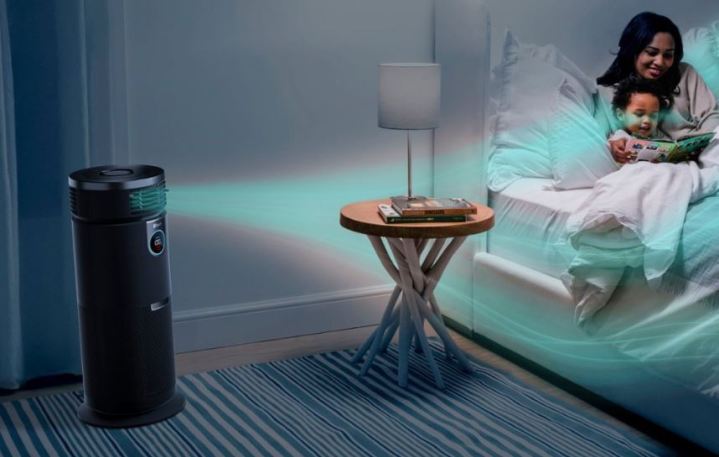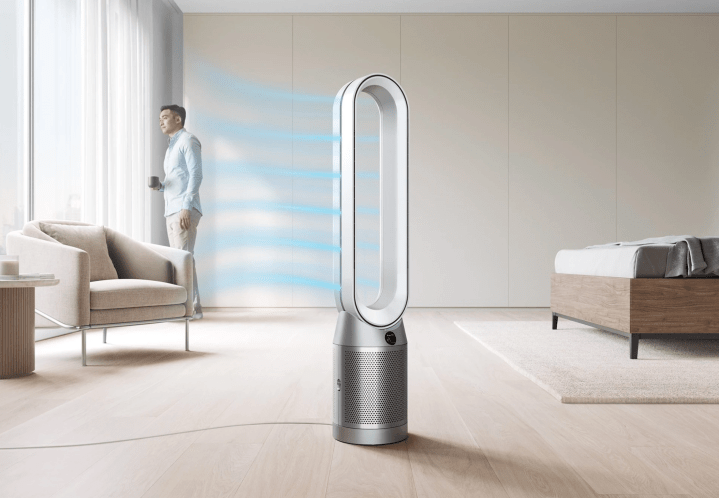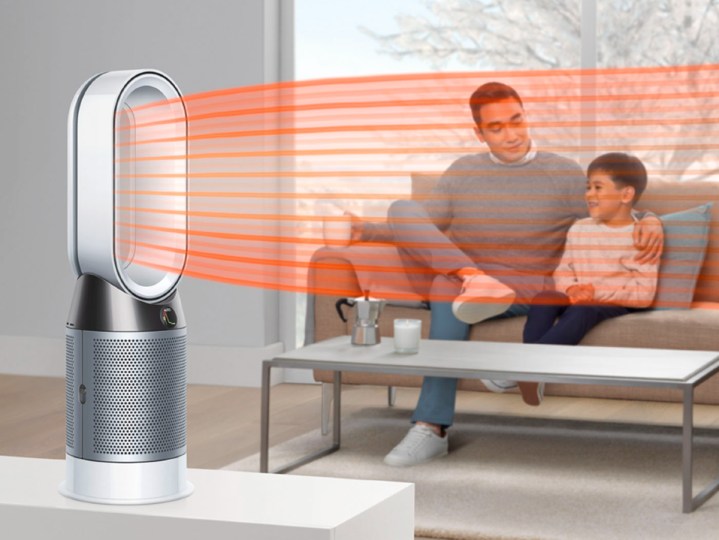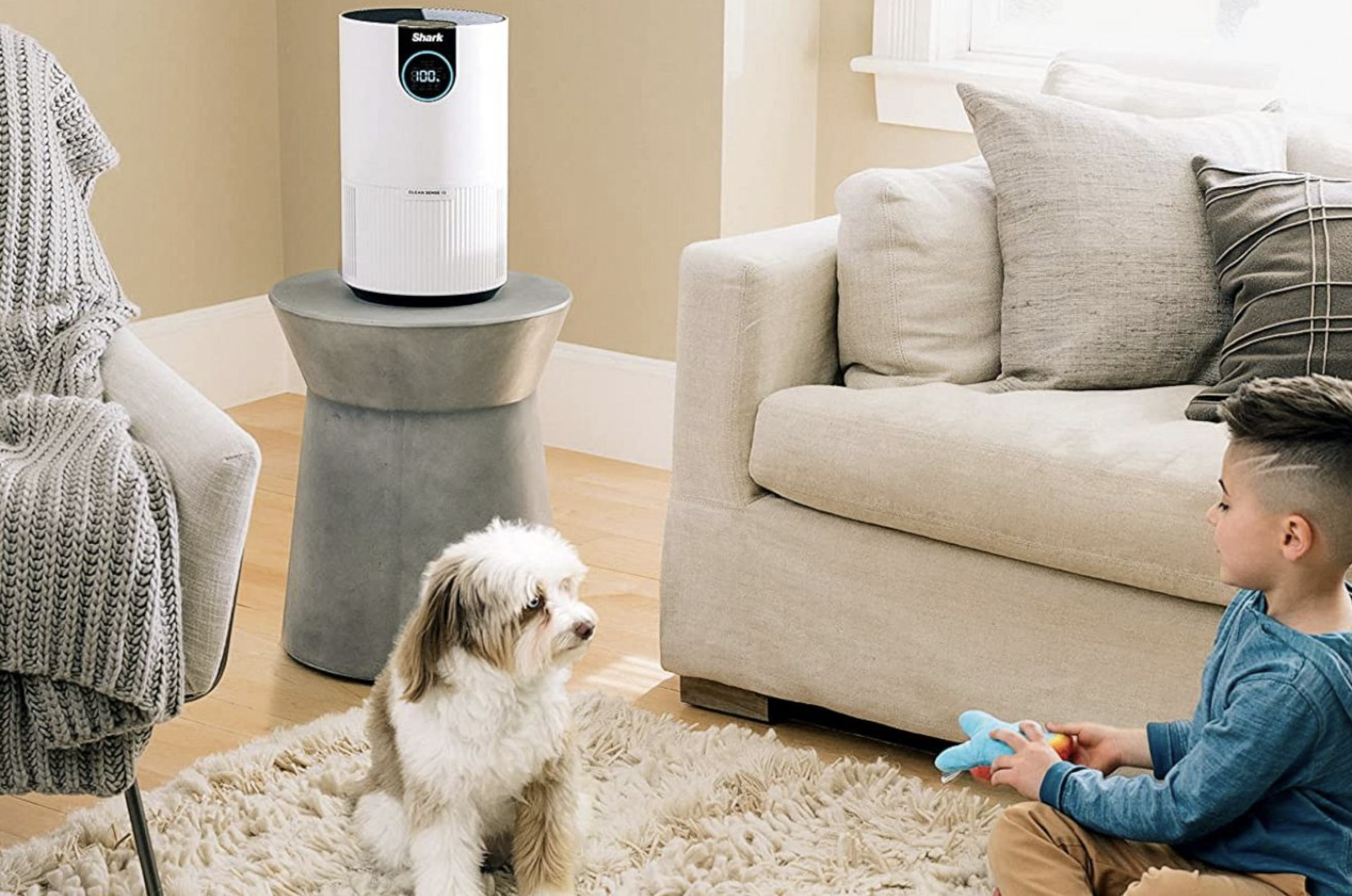Summer is upon us. The sun is out, the birds are singing, and the trees are celebrating by releasing all their pollen in massive, yellow, allergy-inducing clouds. Spare your home from this invasion with an air purifier. Unfortunately, these suckers aren’t cheap. Fortunately, air purifier deals can save you quite a bit of money if you know when to buy. We’ve done the legwork for you and found the best air purifier deals out there today. The big savings are on the budget brands like Shark, but we’ve found some nice discounts on name brands like LG and Dyson. Read on to find out which air purifier is best for you, considering the price, size, and features like HEPA filtering vs PECO filtering and heat and fan combos.
Today’s best air purifier deals
Shark Clean Sense Air Purifier 500 — $150, was $230

This Shark model is definitely your best option if price is your deciding factor. It does everything you could hope for in an air purifier, with some nice bonuses. Its standout feature is the Clean Sense IQ. It automatically detects spikes in poor air quality and starts working overtime on its own. That means you can plug it in and forget about it. It will do its job without being asked. It has a true HEPA filter that catches 99.98% of particles, from large to micro-sized.
Shark Air Purifier MAX — $260, was $330

The MAX version of the classic Shark air purifier is basically the same as the standard version, but it can cover a larger area. It has the same true HEPA filter and Clean Sense IQ that the base model has, but it will clean up to 1,200 square feet. That makes it great for big areas like family rooms, garages and kitchens. At typical dust levels, you can leave it on for at least six months without changing the filter.
Shark 3-in-1 Max Air Purifier, Heater and Fan — $370, was $450

This is the next evolution of the Shark models above. It has the same HEPA filter and Clean Sense IQ as both of the models above. It can cover 1,000 square feet, so almost the same amount as the standard MAX model. The big feature that sets this one apart is its ability to function as a fan and a heater. The best part: It still purifiers the hot air it puts out, so you get pure, clean hot air. You can also set it as a normal fan, which will help circulate clean air through your whole house (it still purifies in this mode too, of course).
LG PuriCare AeroTower Smart HEPA air purifier — $400, was $550

With its sleek design, LG’s fan and purifier can purify rooms of any size, large and small, offering coverage for up to 818 square feet. A built-in LED indicator tells you about air quality, changing from red to orange, yellow, and green. The HEPA filtration removes most fine dust and particles, including allergens. Plus, you can use the ThinQ app to take control and adjust settings easily and remotely.
Dyson Purifier Cool TP07 — $550, was $650

Ahh, Dyson. Everything Dyson makes is top notch, including fans, hair curlers, blow dryers, and air purifiers. Aside from looking cool and sci-fi, its a fantastic air purifier. It has a lot of power, so it can suck in micro-sized debris from far away. It uses a two-stage filtration process that traps the debris inside, then it cycles air out through its powerful bladeless fan, cooling up to 2,860 square feet.
Dyson Purifier Hot+Cool HP07 — $686, was $750

The Dyson Hot+Cool HP07 is exactly what it sounds like: an air purifier and fan combo. It uses the same technology that the TP07 uses to capture and filter debris from your air. It’s shorter than the TP07, but can still cover the same square footage. The fan blows out clean hot air, so you don’t have to decide between keeping warm and keeping clean. You can set it to various different cycles, for instance a quite mode while you’re sleeping and a maximum mode when you’re out during the day.
HEPA vs. PECO filters: What’s the difference?
You have likely heard of HEPA high-efficiency particulate air filters. A majority of air purifiers have HEPA-standard filtering. Some vacuums feature HEPA air filtering as well. These mechanical air filters force air through a very fine mesh fabric to trap impurities that get mixed in the air. To qualify as a HEPA filter, it must remove up to 99.97% of particles as little as 0.3 microns from the air. The great thing about HEPA filters is they become more efficient as the air gets dirtier whereas electrostatically charged air filters require more frequent replacements.
PECO or photoelectrochemical oxidation technology, on the other hand, is a kind of filter that does not give allergens, bacteria, or viruses any chance to thrive. Instead of catching these toxins, PECO utilizes light to spark a nano-coated filter and achieve a catalytic oxidation reaction. Basically, organic substances are broken down into tiny harmless molecules. Since PECO filters don’t collect particles, they can clear pollutants that are about 1,000 times smaller than what HEPA filters can. PECO filtering purifies and disinfects the air without you having to dispose of anything.
How to choose an air purifier
There are many factors to consider when choosing an air purifier. Apart from the brand, start with the size of the room where you will use the device. You may spot some models with the AHAM Verified seal. That sale means the purifier has been independently tested and passed the quality imposed by the Association of Home Appliance Manufacturers. You can also compare the CADR (clean air delivery rate) which refers to the volume of clean air an air purifier can produce at the highest speed setting in relation to the room’s cubic footage. The higher the CADR, the faster and more efficient the air purifier is.
If you or family members have allergies or asthma, you can also look for Asthma and Allergy Foundation of America air purifiers with this certification are guaranteed to reduce allergens in the air in both carpeted and hard floor rooms. Examples of Asthma and Allergy Friendly certified air purifiers include designated Dyson Pure Hot + Cool models, LG PuriCare, 360, and RabbitAir Minus A2 and A3.
Since air purifiers typically run all day, factor in the cost of energy. Look for the Energy Star logo, which guarantees that the air purifier is at least 40% more energy-efficient than typical models. You’ll need to account for what you’ll spend on replacement filters or buy an air purifier with washable filters. Some air purifiers are overly noisy, so check for statements of quiet operation or night modes.
There are air purifiers with specialized filters to take on particular pollutants. HEPA filters are common for handling allergens, pet dander, hair, dust mites, and pollen while units with active carbon filters are recommended for removing odors. There are also models that are designed for smoke or for people with multiple chemical sensitivities.
While most air purifiers promise ease of use, some units up the ante with built-in smart features. Ordinary air purifiers operate in one or two ways. Those with continuous air filtering work pretty much like a room fan; press your desired air flow speed and it consistently moves air at that rate. Others have modes for automatic air filtering that detect impurities with air quality sensors and self-adjust to remove them from the air. Smart air purifiers allow you to track and control the quality of your air., typically with a smartphone app. Some smart air purifiers work in conjunction with smart home systems and devices, such as those that are compatible with Amazon Alexa.
The best air purifier is simply one that best suits your needs. Supplementary features such as noise, portability, touch programs with LED indicators, timer, remote, or smart functions are secondary to room size and the appropriate filtration system. Air purifiers can improve indoor air quality by eliminating allergens that are floating in the air.
Looking for more ways to upgrade your home’s cleanliness? Check out what we have on robot vacuums for your dust-ridden floors, steam cleaners, smart home hubs, and more on our curated deals page.

